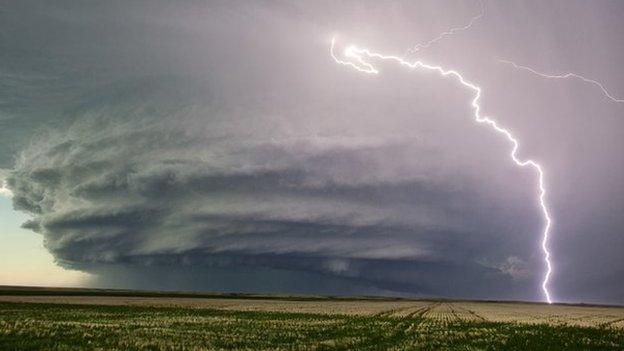Solar wind 'triggers lightning on Earth'
- Published
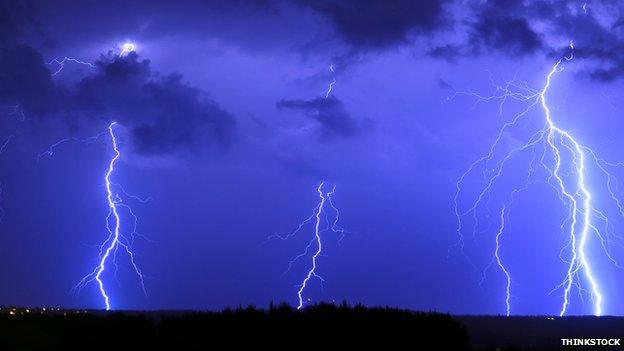
When charged particles from the Sun bombard our atmosphere lighting strikes increase
Activity on the Sun is sparking lightning strikes here on Earth, a study suggests.
Scientists have found that when gusts of high-speed solar particles enter our atmosphere, the number of lightning bolts increases.
The research is published in the journal Environmental Research Letters, external.
Because solar activity is closely monitored by satellites, it may now be possible to forecast when these hazardous storms will hit.
Lead researcher Dr Chris Scott, from the University of Reading, said: "Lightning represents a significant hazard.
"There's something like 24,000 people struck by lightning each year, so having any understanding or advanced warning of the severity of lightning storms has to be useful."
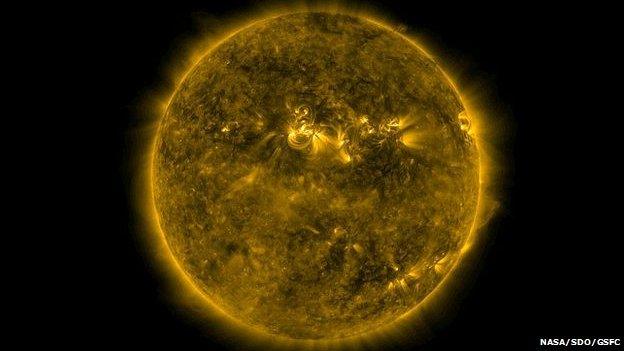
Charged particles constantly stream off the surface of the Sun and make their way at high speed to Earth
As the Sun rotates, the fiery ball of plasma hurls out charged particles that travel at between 400-800km a second (900,000 to 1.8 million miles per hour).
The arrival of these solar winds in the atmosphere can trigger displays of the Northern Lights, but this research shows how they could influence our weather too.
"The solar wind is not continuous, it has slow and fast streams. Because the Sun rotates, these streams can be sent out behind each other - so if you have a fast solar wind catching up with a slow solar wind, it causes a concentration to occur," said Dr Scott.
The scientists found that when the speed and intensity of the solar winds increased, so too did the rate of lightning strikes.
The team said the turbulent weather lasted for more than a month after the particles hit the Earth.
Using data from northern Europe, the researchers found there was an average of 422 lightning strikes in the 40 days after the high-speed solar wind arrived, compared with 321 strikes in the 40 days prior.
The finding was surprising, said Dr Scott, because it had been thought that an increase in the solar wind would have the opposite effect.
He explained: "It's unexpected, because these streams of particles bring with them an enhanced magnetic field - and this shields Earth from the very high-energy cosmic rays from outside of the Solar System - these are generated when supernovae explode, and they accelerate particles up to the speed of light."
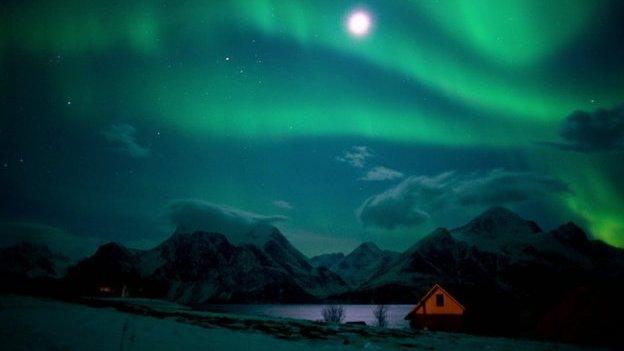
The Northern Lights are also prompted by the arrival of solar winds in the Earth's atmosphere
Previous research has shown that cosmic rays from space can boost the rate of lightning, and it had been thought that an increased shielding effect from the solar particles would cause a decrease in the number of strikes.
"Instead what we actually saw was a marked increase in lightning. It turns out these solar winds bring with them a slightly lower energy population of particle - and these are enhancing the lighting rate," Dr Scott said.
The team is not exactly sure of the mechanism, but said that the particles may be penetrating storm clouds, making it easier for them to discharge electrical energy as a bolts of lightning.
"What we need to do now is to track these energetic particles down through the atmosphere, to see if we can see where they end up," said Dr Scott.
"We know these particles aren't energetic enough to reach the ground, so they must be stopped somewhere in the lower atmosphere, and we need to know where this is."
However, while the questions of how still need to be answered, there is plenty of information about when the particles arrive, which could help with storm forecasting.
"These solar wind streams are very predictable. We know the Sun rotates every 27 days, so there is a very strong recurrence rate. If we see them at one time, we know 27 days later it will be back again," said Dr Scott.
While the data was collected in Europe, the researchers believe the effect is global.
Follow Rebecca on Twitter, external
- Published17 January 2014
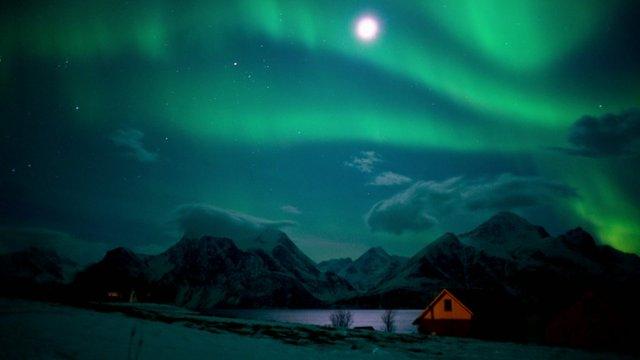
- Published18 January 2014

- Published30 April 2014
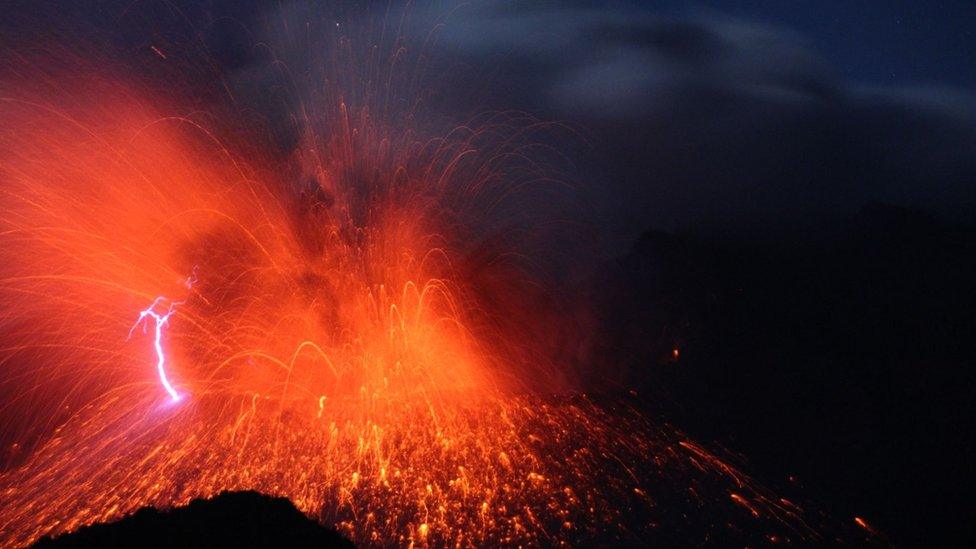
- Published14 March 2014
